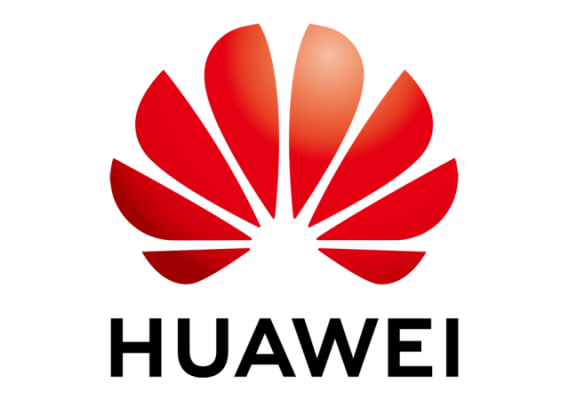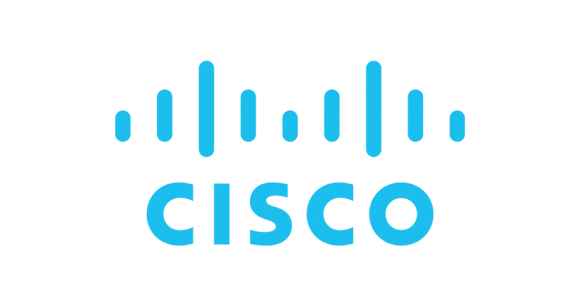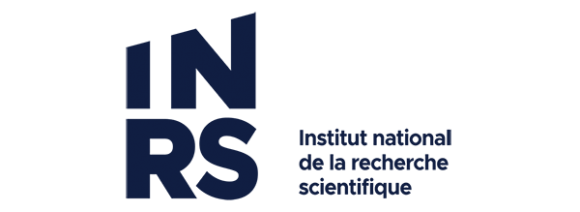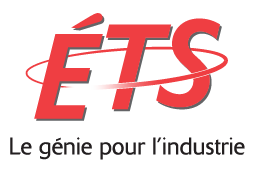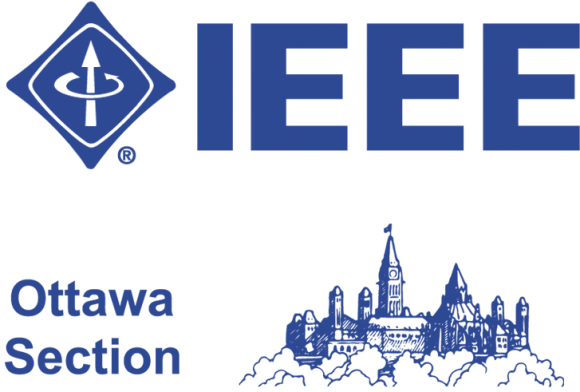Back to Industry Program Page >>
Although LIVE events are now over, registrants will continue to have access to recorded sessions until the end of July. Registration is still open.
Tuesday, 15 June 2021
10:30am – 11:50am (EDT)
T1: 5G Deployment Results & Roadmaps: eMBB, URLLC and mMTC
Wednesday, 16 June 2021
10:30am – 11:50am (EDT)
T2: 6G Use Cases, Requirements, and Roadmap
Thursday, 17 June 2021
10:30am – 11:50am (EDT)
T4: AI & Communications
Monday, 21 June 2021
9:30am – 10:50am (EDT)
T6: Robotics: Swarms and Smart Dust
T7: The Road to 6G – Key Technology Enablers and Their Impact on 6G Architecture
Tuesday, 22 June 2021
09:30am – 10:50am (EDT)
T5: Quantum Information & Sensing
Wednesday, 23 June 2021
9:30am – 10:50am (EDT)
T8: IEEE 802.11be: Towards the Future Wi-Fi 7
T1: 5G Deployment Results & Roadmaps: eMBB, URLLC and mMTC
Tuesday, 15 June 2021, 10:30am – 11:50am (EDT)
Organizer: Stefan Parkvall, Ericsson
Panelists:
Takehiro Nakamura, NTT DoCoMo, SVP and General Manager of the 6G Laboratories in NTT DOCOMO, Inc.
Francesco Grilli, Qualcomm, Vice President, Product Management
Juho Lee, Samsung, Fellow (Technical SVP)
Arda Aksu, Verizon, Fellow, Technology and Strategy Planning
Eric Hardouin, Orange, Director, “Ambient Connectivity” Research Domain
Bios:
 Stefan Parkvall
Stefan Parkvall
Stefan Parkvall joined Ericsson in 1999 and is a Senior Expert working with future radio access. He is one of the key persons in the development of HSPA, LTE and NR radio access and has been deeply involved in 3GPP standardization for many years. Dr Parkvall is a fellow of the IEEE and is co-author of several popular books such as “4G – LTE/LTE-Advanced for Mobile Broadband” and “5G NR – The Next Generation Wireless Access”. Dr. Parkvall has more than 1500 patents in the area of mobile communication and holds a Ph.D. in electrical engineering from the Royal Institute of Technology (KTH) in Stockholm, Sweden.
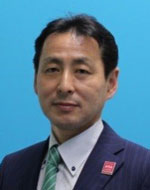 Takehiro Nakamura
Takehiro Nakamura
Mr. Takehiro Nakamura joined NTT Laboratories in 1990. He is now SVP and General Manager of the 5G Laboratories in NTT DOCOMO, Inc. Mr. Nakamura has been engaged in the standardization activities for the W-CDMA, HSPA, LTE/LTE-Advanced and 5G at ARIB in Japan since 1997. He has been the Acting Chairman of Strategy & Planning Committee of 5G Mobile Communications Promotion Forum(5GMF) in Japan since October 2014. Mr. Nakamura has also been contributing to standardization activities in 3GPP since1999, including as a contributor to 3GPP TSG-RAN as chairman from April 2009 to March 2013. He is also very active in standardization of C-V2X/Connected Car in ARIB and ITS Info-communications Forum in Japan. He is now a leader of Cellular System Application Task Group of ITS Info-communications Forum.
 Francesco Grilli
Francesco Grilli
Francesco Grilli is vice president of product management at Qualcomm Technologies, Inc. where he has been responsible for the roadmap planning of baseband modem technology since July 2011, and position-location technology since May 2018.
From June 2008 through June 2011, Grilli was part of the Strategic IP Department at Qualcomm where he led a team of engineers and attorneys responsible for intellectual property vetting, development, and maintenance in the area of signaling protocols used in cellular networks (MAC layer and above).
From July 1999 through June 2008 Grilli represented Qualcomm at 3GPP TSG RAN WG2 meetings and participated to the development of the Radio Resource Control protocol specifications for both the UMTS and the LTE standards. During this period, he also led the internal R&D efforts focused on the upper layers of the LTE system, a research effort that produced innovations that are now part of the LTE standard. He served as 3GPP TSG RAN WG2 vice chairman and he attended most of the RAN plenary meetings.
From November 1998, when he joined Qualcomm, through July 1999, Grilli contributed to the development of IS-801 — the first position-location standard for cellular systems.
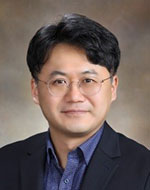 Juho Lee
Juho Lee
Juho Lee is currently a Fellow (technical SVP) with Samsung Electronics, where he is leading research and standardization for mobile communications. He joined Samsung Electronics in 2000 and has worked on 3G, 4G, and 5G technologies and is leading research for future technologies such as beyond 5G and 6G. He was a vice chairman of 3GPP RAN WG1 from February 2003 to August 2009 and chaired LTE/LTE-Advanced MIMO sessions. He also served as the rapporteur of the work item for specifying CoMP in 3GPP LTE-Advanced Rel-11. Dr. Lee is a Fellow of IEEE. He received his B.S., M.S., and Ph.D. degrees in electrical engineering from Korea Advanced Institute of Science and Technology (KAIST), Korea, in 1993, 1995, and 2000, respectively.
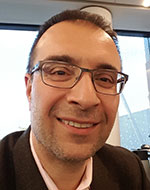 Arda Aksu
Arda Aksu
Arda Aksu is a Fellow at Verizon, Global Network and Technology, where he is a key technical lead overseeing many 5G network and technology initiatives related to RAN technologies, RAN architecture and RF. He is also supporting industry standards (3GPP, ORAN), future release study and planning activities. In the past he had the opportunity to spearhead new technology introductions such as 5G technology forum (5GTF) specifications, LTE, VoLTE, femtocells and shared spectrum access in Verizon. Dr. Aksu has over 100 patents, and holds an MSc and PhD in Wireless Telecommunications from Northeastern University, Boston, MA. He is the author of many scientific and technical publications, panel/session chair, and invited speaker for various industry forums.
 Eric Hardouin
Eric Hardouin
Eric Hardouin leads the “Ambient Connectivity” research in Orange, which investigates future access and transport networks and technologies, as well as related business models. Eric received a Ph.D. degree in signal processing and telecommunications from Telecom Bretagne and the University of Rennes 1, France, in 2004. Since 2004, he has been with Orange, where he has conducted or supervised research on interference mitigation for mobile networks. Between 2008 and 2013 he represented Orange in the physical layer standardization group of 3GPP (RAN1) for HSPA, LTE and LTE-Advanced. From 2012 to 2015, Eric coordinated the research on wireless networks in Orange. Eric had a leading role in the NGMN 5G White Paper, as co-lead of the work on 5G requirements. Eric is co-author of the book “LTE et les réseaux 4G” (in French).
T2: 6G Use Cases, Requirements, and Roadmap
Wednesday, 16 June 2021, 10:30am – 11:50am (EDT)
Organizers: Juho Lee, Samsung & Charlie (Jianzhong) Zhang, Samsung
Moderator: Juho Lee (Fellow (technical SVP), Samsung Electronics, Korea)
Panelists:
Gerhard Fettweis (Vodafone Chair Professor, TU Dresden, Germany)
Takehiro Nakamura (SVP and General Manager of the 5G Laboratories, NTT DOCOMO, Japan)
Stefan Parkvall (Senior Expert, Ericsson Research, Sweden)
John Smee (VP Engineering, 5G Wireless R&D Lead, Qualcomm, USA)
Jianmin Lu (Executive Director, Huawei Wireless Technology Lab)
Abstract: 5G was developed to support various new services in addition to the traditional mobile broadband and can be characterized by eMBB (enhanced Mobile BroadBand), URLLC (Ultra Reliable and Low Latency Communications), and mMTC (massive Machine Type Communications). New services enabled by 5G include the provisioning of new media experiences such as augmented reality (AR) and virtual reality (VR) over mobile networks, the support of new vertical services such as connected vehicles, smart factories, and public safety, etc.
Since the start of commercial deployments of 5G communication systems in 2019, 5G is now being deployed in various regions using various frequency bands, e.g., 3.5 GHz and 28 GHz. Market reports indicate that its penetration speed is much faster than 4G. While the mobile industry is mainly focusing on the realization of what 5G technologies promised, we can see that initial consideration about the next generation of mobile communications, i.e., 6G, is already happening.
Considering the general trend of introducing new services with higher requirements over different generations of communication systems, it would be natural to expect that 6G technologies need to be developed to envision more advanced services than 5G. Mobile hologram is an example of such new services that could be made possible with 6G. Another example is provisioning of truly immersive experiences in a virtual world by incorporating VR, AR, and mixed reality (MR). 6G could also enable digital replica to connect real and digital worlds. In order to support these services, 6G would need to support much higher data rate and much lower latency than 5G. While more studies are needed to define performance requirements for 6G, initial investigation already suggests rough estimates such as 1 Tbps peak rate, 10 Gbps user-experienced data rate, and 0.1 ms air latency.
It is envisaged that the number of connected devices will reach 500 billion by 2030, which is about 59 times larger than the expected world population (8.5 billion) by that time. Examples of connected machines include vehicles, robots, drones, home appliances, displays, smart sensors installed in various infrastructures, construction machineries, and factory equipment.
The limitation on computing power and battery life of mobile devices highlights the need for taking a holistic view on the overall architecture of 6G system including network entities as well as mobile devices. In addition, the increased openness of mobile communications, e.g., the use of open source software and personal user information increases the need to maintain security and keep the trust of subscribers.
There will be two industry panel sessions to facilitate discussion about 6G, i.e., Part 1 entitled “6G Use Cases, Requirements, and Roadmap” and Part 2 entitled “The Road to 6G - Key Technology Enablers and Their Impact on 6G Architecture”.
This proposed panel is for Part 1 and its discussion topics will focus on technical and social trends that would motivate further evolution beyond 5G, representative use cases of 6G, and initial views about vision, requirements, and roadmap of standardization and commercialization for 6G. Considering that the mobile industry will continue the enhancement of 5G networks for about 10 years before the start of deploying 6G networks, it would also be worth discussing how to define the relationship between 5G evolution and 6G.
In this proposed panel, we will bring together leading experts from the mobile industry as well as the academia. The proposed panel can serve as a good opportunity to share the technology leaders’ views and can provide a bridge between academia and industry.
Bios:
 Juho Lee
Juho Lee
Juho Lee is currently a Fellow (technical SVP) with Samsung Electronics, where he is leading research and standardization for mobile communications. He joined Samsung Electronics in 2000 and has worked on 3G, 4G, and 5G technologies and is leading research for future technologies such as beyond 5G and 6G. He was a vice chairman of 3GPP RAN WG1 from February 2003 to August 2009 and chaired LTE/LTE-Advanced MIMO sessions. He also served as the rapporteur of the work item for specifying CoMP in 3GPP LTE-Advanced Rel-11. Dr. Lee is a Fellow of IEEE. He received his B.S., M.S., and Ph.D. degrees in electrical engineering from Korea Advanced Institute of Science and Technology (KAIST), Korea, in 1993, 1995, and 2000, respectively.
Charlie Zhang
Charlie Zhang is a VP and head of Standards and Mobility Innovation Lab with Samsung Research America, where he leads research, prototyping and standards for 5G cellular systems and future multimedia networks. He received his Ph.D. degree from University of Wisconsin, Madison. From August 2009 to August 2013, he served as the Vice Chairman of the 3GPP RAN1 working group and led development of LTE and LTE-Advanced technologies such as 3D channel modeling, UL-MIMO and CoMP, Carrier Aggregation for TD-LTE, etc. Before joining Samsung, he was with Motorola from 2006 to 2007 working on 3GPP HSPA standards, and with Nokia Research Center from 2001 to 2006 working on IEEE 802.16e (WiMAX) standard and EDGE/CDMA receivers. Dr. Zhang is a Fellow of IEEE.
 Gerhard Fettweis
Gerhard Fettweis
Gerhard P. Fettweis F’09, is Vodafone Chair Professor at TU Dresden since 1994, and heads the Barkhausen Institute since 2018, respectively. He earned his Ph.D. under H. Meyr's supervision from RWTH Aachen in 1990. After one year at IBM Research in San Jose, CA, he moved to TCSI Inc., Berkeley, CA. He coordinates the 5G Lab Germany, and has coordinated 2 German Science Foundation (DFG) centers at TU Dresden, namely cfaed and HAEC. In 2019 he was elected into the DFG Senate. His research focusses on wireless transmission and chip design for wireless/IoT platforms, with 20 companies from Asia/Europe/US sponsoring his research. He also serves on the board of National Instruments Corp, and advises other companies.
Gerhard is IEEE Fellow, member of the German Academy of Sciences (Leopoldina), the German Academy of Engineering (acatech), and received multiple IEEE recognitions as well has the VDE ring of honor. In Dresden his team has spun-out seventeen start-ups, and setup funded projects in volume of close to EUR 1/2 billion. He co-chairs the IEEE 5G/Future Networks Initiative, and has helped organizing IEEE conferences, most notably as TPC Chair of ICC 2009 and of TTM 2012, and as General Chair of VTC Spring 2013 and DATE 2014.
 Takehiro Nakamura
Takehiro Nakamura
Mr. Takehiro Nakamura joined NTT Laboratories in 1990. He is now SVP and General Manager of the 5G Laboratories in NTT DOCOMO, Inc. Mr. Nakamura has been engaged in the standardization activities for the W-CDMA, HSPA, LTE/LTE-Advanced and 5G at ARIB in Japan since 1997. He has been the Acting Chairman of Strategy & Planning Committee of 5G Mobile Communications Promotion Forum(5GMF) in Japan since October 2014. Mr. Nakamura has also been contributing to standardization activities in 3GPP since1999, including as a contributor to 3GPP TSG-RAN as chairman from April 2009 to March 2013. He is also very active in standardization of C-V2X/Connected Car in ARIB and ITS Info-communications Forum in Japan. He is now a leader of Cellular System Application Task Group of ITS Info-communications Forum.
 Stefan Parkvall
Stefan Parkvall
Stefan Parkvall joined Ericsson in 1999 and is a Senior Expert working with future radio access. He is one of the key persons in the development of HSPA, LTE and NR radio access and has been deeply involved in 3GPP standardization for many years. Dr Parkvall is a fellow of the IEEE and is co-author of several popular books such as “4G – LTE/LTE-Advanced for Mobile Broadband” and “5G NR – The Next Generation Wireless Access”. Dr. Parkvall has more than 1500 patents in the area of mobile communication and holds a Ph.D. in electrical engineering from the Royal Institute of Technology (KTH) in Stockholm, Sweden.
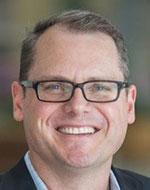 John Smee
John Smee
Dr. John E. Smee is Vice President of Engineering at Qualcomm Technologies Inc., where he is the 5G R&D lead responsible for overseeing all 5G research projects including end-end systems design and advanced RF/HW/SW prototype implementations in Qualcomm’s wireless research and development group. He joined Qualcomm in 2000, holds over 100 U.S. Patents, and has been involved in the design, innovation, standardization, and productization of wireless communications systems such as 5G NR, 4G LTE, 3G CDMA, and IEEE 802.11. He also leads Qualcomm’s companywide academic collaboration program across technologies including wireless, semiconductor, multimedia, security, and machine learning. John received his Ph.D. in electrical engineering from Princeton University and also holds an M.A. from Princeton and an M.Sc. and B.Sc. from Queen's University.
 Jianmin Lu
Jianmin Lu
Jianmin Lu joined the Huawei Technologies in 1999. During the last two decades, he conducted various researches on wireless communications especially on physic layer and MAC layer and developed 3G, 4G and 5G products. He received more than 50 patents during the research. He was deeply involved in 3GPP2 (EVDO/UMB), WiMAX/802.16m and 3GPP (LTE/NR) standardization and contributed several key technologies such as flexible radio frame structure, radio resource management and MIMO. His current research interest is in the area of signal processing, protocol and networking for the next generation wireless communication. He is currently Executive Director of Huawei Wireless Technology Lab.
T4: AI & Communications
Thursday, 17 June 2021, 10:30am – 11:50am (EDT)
Organizer: Silpan Patel, Ultra GBS
Panelists:
Gwenael Poitau, REMI/Ultra
Dave Latshaw, biophy.ai
Ron Green, KUNGFU.AI
Tingfang Ji, Qualcomm
Alireza Morsali, Humanitas Solution
Bios:
 Silpan Patel
Silpan Patel
Silpan Patel is the President of Ultra Labs at Ultra Electronics Group. He leads advanced prototype development across the group, including applied AI research for wireless mesh networks, surveillance and reconnaissance, and mission planning. Silpan Patel has led advanced R&D efforts across government and industry in multiple technology disciplines, including AI/ML, RF Wireless, and Cyber, applied to missions from seabed to space. Prior to establishing Ultra Labs, he led multi-disciplinary R&D programs at Sandia National Laboratories and MITRE Corporation. Silpan received dual undergraduate degrees in Mathematics and Computer Engineering from Kansas State University, a masters degree in Electrical Engineering from University of Michigan, and an MBA at The Wharton School, University of Pennsylvania.
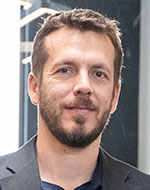 Gwenael Poitau
Gwenael Poitau
Dr. Gwenael Poitau has over 18 years of experience developing wireless communication systems for the telecom and defense markets. He began his career with Wavesat in Montreal developing signal processing algorithms and ASIC architectures for 4G chipsets. He was then promoted as technical lead for LTE development. He continued to work on LTE at Interdigital where he generated Intellectual Property on Device-to-Device communications and participated to LTE Rel. 12 standardization. He joined Ultra Electronics TCS in July 2010 as Wireless Architect for the new ORION radio product line and was promoted Chief Technology Officer in September 2013. In addition to its CTO role, he took the Head of Engineering position in 2016. In 2019, he co-founded the Resilient Machine learning Institute, in collaboration with the École de Technologie Supérieure (Montreal), to enhance the resilience of critical communications systems with distributed AI/ML techniques. Gwenael holds PhD, Master and Bachelor degrees in Physics & Electrical Engineering from Telecom Saint-Etienne and INSA Lyon (France). He has published a large number of patents and scientific articles in wireless technology and now specializes in multi-agent machine learning.
 Dave Latshaw
Dave Latshaw
Dr. David Latshaw II, MBA is the Chief Scientist and Chief Executive of BioPhy, an artificial intelligence company focused on combining deep expertise in the orthogonal disciplines of finance and medicine to drive quantitative decision making in the clinical trials. Dr. Latshaw’s research has always centered on the use of computation techniques to describe complex systems at multiple scales simultaneously and using the derived outcomes to improve the process of therapeutic research and development for patients everywhere. Dr. Latshaw’s graduate research focused on the kinematic differences in protein aggregation studied in vitro rather than in vivo and their implications for future research in neurodegenerative diseases. During his tenure at Johnson and Johnson, Dr. Latshaw developed an artificial intelligence program that contributed to $16 billion in yearly sales, a 20% reduction in cost of goods and a 50% increase in reliability across multiple molecular modalities globally for which he was inducted into Frontiers of Engineering, an organization created by the National Academy of Engineering to recognize top early career engineers. With BioPhy Dr. Latshaw will focus on novel uses for artificial intelligence to subsidize the development and commercialization of therapies that have significant societal benefit but may be unattractive to investors and entrepreneurs. Dr. Latshaw is also actively engaged in mentoring new generations of scientists and engineers to reach their full potential using business principals in their work to supplement scientific decision making. In his personal life, Dr. Latshaw is a proud husband, father of two beautiful daughters, and an avid endurance athlete.
 Ron Green
Ron Green
Ron Green, KUNGFU.AI’s Chief Technology Officer, is a serial tech entrepreneur, CTO, and expert in machine learning. He's built several successful companies in telecom, biotech, e-commerce, social media, and healthcare. He was most recently CEO and founder of Thrive Technologies (acquired by CLOUD), a mobile healthcare startup. Prior to Thrive, Ron ran software development at Ziften Technologies, Powered (acquired by Dachis Group), and Visible Genetics (acquired by Bayer). Ron holds an MSc with Distinction in Evolutionary and Adaptive Systems from the University of Sussex, and a degree in Computer Science from the University of Texas.
 Tingfang Ji
Tingfang Ji
Tingfang Ji jointed Qualcomm in 2003 and is currently a Senior Director of engineering in Wireless R&D. From 2003 to 2014, he made instrumental technical contributions towards the development of LTE/LTE-A technology and served as a vice chairman of the radio working group (RAN4) of 3GPP. Since 2014 he has been responsible for one of the main Qualcomm 5G research projects, which spear-headed Qualcomm's 5G NR air interface design/standardization efforts, pre-commercial 5G NR sub 6GHz IODT/trials, and 5G experimental macro networks. Before joining Qualcomm, Tingfang was a member of the technical staff at Bell Labs. As an inventor, he has more than 800 US patent applications. Tingfang received his Ph.D degree in E.E. from the University of Michigan, Ann Arbor in 2001, and also holds a B.Sc. from Tsinghua University.
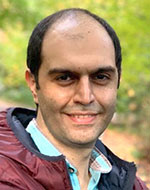 Alireza Morsali
Alireza Morsali
Alireza Morsali is now working as Director of Telecommunication at Humanitas Solution, an innovative company specializing in next generation edge computing solutions, especially in austere environments. Mr Morsali received the B.Sc. and M.Sc. degrees in electrical engineering from University of Kerman, Iran, in 2009, and 2011, respectively. He finished his Ph.D. under supervision of Prof. Champagne in 2020 at McGill University. His R/D topics include signal processing, wireless communications, and artificial intelligence. He was a recipient of several awards and scholarships, including, the McGill Engineering Doctoral Award, STARaCom Collaborative Grant, and McGill BLUE Fellowship.
T5: Quantum Information & Sensing
Tuesday, 22 June 2021, 09:30am – 10:50am (EDT)
Organizer: Nicolas Godbout, Polytechnique Montreal
Panelists:
Félix Bussières, VP Research and Technology – Id Quantique
Bruno Huttner, Director of Strategic Quantum Initiatives – Id Quantique
Thierry Debuisschert, Expert – Thales
Alireza Najafi-Yazdi, Founder and CEO - Alireza Najafi-Yazdi, Founder and CEO
Yoann Jestin, Founder and CEO - Ki3 Photonics
Ghislain Lefebvre, Partnership development manager – IBM Q (Institut Quantique)
Forum Theme: Quantum Technology Now
Forum Description: A burgeoning second quantum revolution promises powerful applications of quantum mechanical phenomena discovered and understood throughout the last century. While the biggest impacts seem confined to an undetermined future time frame, some quantum technologies are achieving maturation. We ask a panel of experts about the current and near-term applications of quantum technologies in information and sensing.
Bio:
 Nicolas Godbout
Nicolas Godbout
Nicolas Godbout is Professor of Engineering Physics at Polytechnique Montréal, Director of the Institut transdisciplinaire d’information quantique (INTRIQ) as well as Co-founder of Castor Optics Inc. Throughout his career in the private and public sectors, he tackled research and development projects harnessing optical fibres for applications in telecommunications, biomedical engineering and quantum information. He began performing research in quantum information twenty years ago and is now active in advocating quantum technologies.
T6: Robotics: Swarms and Smart Dust
Monday, 21 June 2021, 9:30am – 10:50am (EDT)
Organizer: Giovanni Beltrame, Polytechnique Montreal
Panelists:
Nathalie Majcherczyk - Amazon
Patrick Edwards-Daugherty - Spiri Robotics
Stephane Caron - XST
Carlo Pinciroli - Worcester Polytechnic Institute
Bio:
Giovanni Beltrame
Giovanni Beltrame obtained his Ph.D. in Computer Engineering from Politecnico di Milano, in 2006 after which he worked as microelectronics engineer at the European Space Agency on a number of projects spanning from radiation-tolerant systems to computer-aided design. In 2010 he moved to Montreal, Canada where he is currently Professor at Polytechnique Montreal with the Computer and Software Engineering Department. He was also Visiting Professor at the University of Tübingen in 2017/2018. Dr. Beltrame directs the MIST Lab, with more than 20 students and postdocs under his supervision. He has completed several projects in collaboration with industry and government agencies in the area of robotics, disaster response, and space exploration. His research interests include modeling and design of embedded systems, artificial intelligence, and robotics, on which he has published research in top journals and conferences.
 Nathalie Majcherczyk
Nathalie Majcherczyk
Nathalie Majcherczyk is an Applied Scientist at Amazon Lab126. She defended her PhD in Robotics Engineering from Worcester Polytechnic Institute (WPI) in January 2021. She was the recipient of a Belgian American Educational Foundation fellowship during her PhD. In the Novel Engineering for Swarm Technologies Lab at WPI, her doctoral research involved designing distributed algorithms for robot swarm coordination through explicit inter-robot communication.
 Patrick Edwards-Daugherty
Patrick Edwards-Daugherty
Patrick Edwards-Daugherty founded his first company, Pleiades, in 1999, a year after completing his studies at Cambridge in theoretical physics. In 2015, the company spun off its robotics business, Spiri, where Mr. Edwards-Daugherty serves both as chief executive and lead researcher.
Spiri Robotics provides autonomous systems and web services to researchers, government, and industry. Our products include the Spiri Mu drone, the Spiri Host laptop, and the Spiri Cloud service. We enable our clients to gather, store, and analyze large data sets, and remotely manage their drones, assets, and activities. We proudly serve those who are working to address the complex and interconnected challenges of our times.
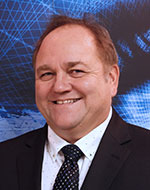 Stephane Caron
Stephane Caron
Stephane Carone is the president of Xpert Solutions Technologiques inc. (XST), a Canadian IT company founded in 2003 and based in Quebec City area. XST team have participated in the continued development and improvement of the INNAV VTMIS system since its creation in 1996. In fact, XST was founded in 2003 by these same members. XST is also the sole developer and maintainer of INNAV system, used by the Canadian Coast Guard.
XST possesses the sole and exclusive international sales rights of the INNAV VTMIS system. INNAV VTMIS system is the most advanced Vessel Traffic Management and Information System in the world, and it is the only VTMIS used and trusted by the Canadian Coast Guard to manage all vessel traffic across Canada. As the VTMIS used in Canada to control, track and manage all maritime local, coastal and offshore traffic, INNAV helps the Canadian Coast Guard maintain Canadian waters safety while reducing environmental risks. XST has also developed many other non-VTS systems for non-governmental and private clients.
 Carlo Pinciroli
Carlo Pinciroli
Carlo Pinciroli is an assistant professor at Worcester Polytechnic Institute, where he leads NEST Lab. His research interests include multi-robot systems, swarm intelligence, and software engineering. Dr. Pinciroli published more than 50 peer-reviewed articles and 2 book chapters, and edited 2 books. He is associate editor for the Swarm Intelligence journal and for the IROS and ICRA robotics conferences. Dr. Pinciroli was the recipient of several awards for research and teaching, including WPI’s Romeo L. Moruzzi Young Faculty Award for Innovation in Undergraduate Education (2020) and an Amazon Research Award (2019).
T7: The Road to 6G – Key Technology Enablers and Their Impact on 6G Architecture
Monday, 21 June 2021, 9:30am – 10:50am (EDT)
Organizer: Ravikumar Pragada, InterDigital
Panelists:
Erik Dahlman – Senior Expert & Fellow, Ericsson
Antti Toskala – Bell Labs Fellow, Nokia
Chih-Lin – China Mobile Chief Scientist, China Mobile Research Institute
Peiying Zhu – Fellow & 5G/B5G Director, Huawei
Mehdi Bennis – Associate Professor, Centre for Wireless Communications, University of Oulu
Panel Description: This panel will address technical and social trends that would motivate further evolution beyond 5G, representative use cases of 6G, and initial views about vision, requirements, and roadmap of standardization and commercialization for 6G. Considering that the mobile industry will continue the enhancement of 5G networks for about 10 years before the start of deploying 6G networks, it would also be worth discussing how to define the relationship between 5G evolution and 6G.
Panel Abstract: The last decade has seen an exploding growth in mobile data rates enabled by millions of mobile apps, and there are no signs of this slowing down as we look towards 2030. As our society moves towards hyper-connectivity and full digitization by leveraging intelligent data-driven frameworks, it will continue to push the capabilities of 5G to its limits.
As the 1st and 2nd phase of 5G networks are being deployed around the world and with the next phase of 5G standardization underway, discussions towards 6G are gaining significant momentum. While consensus is building towards what 6G KPIs could be, there is much left to debate on what are the actual 6G use-cases and drivers that will require these KPIs! It is anticipated that 6G wireless systems must support far-reaching applications ranging from multi-sensory extended reality, holographic communications to fully autonomous systems at scale which cannot be met by today’s 5G service classes viz., eMBB, URLLC and mMTC.
6G will be expected to deliver near-instant and unlimited connectivity without sacrificing reliability, security/trust for multiple form-factors, while working well within the constraints of device battery-life and computing power. We envisage that 6G will not be a mere push to higher frequency bands with wider bandwidths and ultra-high throughputs; rather it will leverage advances from multiple and disparate disciplines ranging from materials research to AI/ML to neuromorphic computing to blockchain/DLT and edge native architectures, to name a few.
This panel is part-2 of the two-panel series in the industry forum facilitating 6G discussions, with part-1 covering 6G use-cases, requirements and roadmap (add hyperlink to part-1 panel led by Juho).
In this panel, we will look to discuss how we can build from the collective learnings and experiences from commercial 5G rollouts and ongoing research to understand how they are likely to influence advances in 5G and 6G evolution, what will be the most promising technology-enablers of 6G, their impact on 6G architecture, adjacent technologies that 6G will have to rely on and how 6G can promote their emergence.
This panel brings together leading experts who have helped shape the mobile ecosystem representing key players from infra, handset and chipset OEMs, operators and academia to share their views on the major technological developments that are likely to shape the evolution of next-generation wireless communication systems.
Bios:
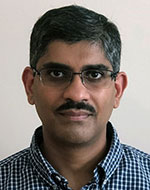 Ravikumar Pragada
Ravikumar Pragada
Ravi Pragada is a Senior Director & Senior Principal Engineer at InterDigital where he is responsible for leading next generation air-interface and system technologies. Since joining InterDigital in 2001, Mr. Pragada has held a variety of senior engineering and management roles covering incubation, pre-standards R&D, standardization, technology & product development and prototyping. Initiatives included development of advanced wireless solutions covering cellular, IEEE 802.11 (Wi-Fi®), and IoT technologies in areas such as ultra-low power communications, sub-THz systems, AI/ML applied to wireless, unmanned aerial systems, millimeter wave air-interface/backhaul design and development, device-to-device communications, and beyond 5G architectures. Prior to InterDigital, he was part of Tier 1 OEM team that developed RNC and NodeB infrastructure for 3G systems. He served as vice-chair for the IEEE 1920: Aerial Communications and Networking Standards Working Group. He is a prolific inventor with 180+ granted or pending patent applications. He is a recipient of numerous innovation awards including InterDigital's Chairman's award, President's award, multiple CTO awards as well as Lucy Mahjobian distinguished publication award.
 Erik Dahlman
Erik Dahlman
Erik Dahlman joined Ericsson in 1993 and is currently Senior Expert in Radio Access Technologies within Ericsson Research. He has been involved in the development of wireless access technologies from early 3G, via 4G LTE, and most 5G NR. He is currently focusing on the evolution of 5G as well as technologies applicable to beyond 5G wireless access. He is the co-author of the books 3G Evolution – HSPA and LTE for Mobile Broadband, 4G – LTE and LTE-Advanced for mobile broadband, 4G – LTE-Advanced Pro and The Road to 5G and, most recently, 5G NR – The Next Generation Wireless Access Technology. He has a PhD in Telecommunication from the Royal Institute of Technology.
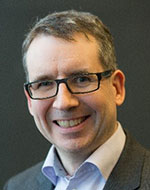 Antti Toskala
Antti Toskala
Antti Toskala (M.Sc) joined the Nokia Research Center in 1994, where he undertook WCDMA system studies as Research Engineer and later as Senior Research Engineer and CDMA Specialist.
He chaired the UMTS physical layer expert group in ETSI SMG2 during 1998, and from 1999 until 2003 he worked in 3GPP as chairman of the TSG RAN WG1. From 2003 to 2005 he worked as Senior Standardization Manager with System Technologies, at Nokia Networks and contributed to product development as the HSDPA Chief Architect for Nokia Networks.
From 2005 onwards he worked with Nokia Networks as Senior Standardization Manager focusing on HSPA and LTE standardization, and later as Head of Radio Standardization with Nokia Siemens Networks focusing on LTE and LTE-Advanced work in 3GPP.
He has co-authored 8 books in 3G, 4G and 5G, the latest one “5G technology – 3GPP New Radio”). As part of the 2010 LTE World Summit LTE Awards, he received the “Award for Individual Contribution for LTE Development” recognizing his contribution to both LTE standardization and LTE knowledge spreading in the industry.
He was nominated as Nokia Fellow in 2015 and Bell Lab Fellow in 2016. Currently he is with Nokia Bell Labs, in Espoo, Finland, heading Nokia 3GPP RAN Standardization, with technical focus on 5G and 5G evolution.
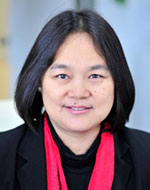 Chih-Lin I
Chih-Lin I
Chih-Lin I is CMCC Chief Scientist of Wireless Technologies. She received Ph.D. EE from Stanford University. She has won 2005 IEEE ComSoc Stephen Rice Prize, 2018 IEEE ComSoc Fred W. Ellersick Prize, the 7th IEEE Asia-Pacific Outstanding Paper Award, and 2015 IEEE Industrial Innovation Award for Leadership and Innovation in Next-Generation Cellular Wireless Networks.
She is the Chair of O-RAN Technical Steering Committee and an O-RAN Executive Committee Member, the Chair of FuTURE 5G/6G SIG, the Chair of WAIA (Wireless AI Alliance) Executive Committee, an Executive Board Member of GreenTouch, a Network Operator Council Founding Member of ETSI NFV, a Steering Board Member and Vice Chair of WWRF, a Steering Committee member and the Publication Chair of IEEE 5G and Future Networks Initiatives, a member of IEEE ComSoc SDB, SPC, and CSCN-SC, and a Scientific Advisory Board Member of Singapore NRF.
She has published over 200 papers in scientific journals, book chapters and conferences and holds over 100 patents. She is co-author of the book “Green and Software-defined Wireless Networks – From Theory to Practice” and has also Co-edited two books: “Ultra-dense Networks – Principles and Applications” and “5G Networks – Fundamental Requirements, Enabling Technologies, and Operations Management”. She is a Fellow of IEEE and a Fellow of WWRF. Her current research interests center around ICDT Deep Convergence: “From Green & Soft to Open & Smart”.
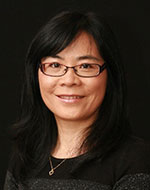 Peiying Zhu
Peiying Zhu
Dr. Peiying Zhu, Senior Vice President of Wireless Research, is a Huawei Fellow, IEEE Fellow and Fellow of Canadian Academy of Engineering. She is currently leading 5G and beyond wireless research and standardization in Huawei. The focus of her research is advanced radio access technologies. She is actively involved in 3GPP and IEEE 802 standards development. She has been regularly giving talks and panel discussions on 5G vision and enabling technologies. She led the team to contribute significantly to 5G technologies.
Prior to joining Huawei in 2009, Peiying was a Nortel Fellow and Director of Advanced Wireless Access Technology in the Nortel Wireless Technology Lab. She led the team and pioneered research and prototyping on MIMO-OFDM and Multi-hop relay. Many of these technologies developed by the team have been adopted into LTE standards and 4G products. Dr. Zhu has more than 200 granted patents.
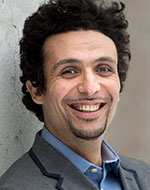 Mehdi Bennis
Mehdi Bennis
Dr Mehdi Bennis is an Associate Professor at the Centre for Wireless Communications, University of Oulu, Finland, Academy of Finland Research Fellow and head of the intelligent connectivity and networks/systems group (ICON). His main research interests are in radio resource management, heterogeneous networks, game theory and distributed machine learning in 5G networks and beyond. He has published more than 200 research papers in international conferences, journals and book chapters. He has been the recipient of several prestigious awards including the 2015 Fred W. Ellersick Prize from the IEEE Communications Society, the 2016 Best Tutorial Prize from the IEEE Communications Society, the 2017 EURASIP Best paper Award for the Journal of Wireless Communications and Networks, the all-University of Oulu award for research, the 2019 IEEE ComSoc Radio Communications Committee Early Achievement Award and the 2020 Clarviate Highly Cited Researcher by the Web of Science. Dr Bennis is an editor of IEEE TCOM and Specialty Chief Editor for Data Science for Communications in the Frontiers in Communications and Networks journal. Dr Bennis is an IEEE Fellow.
T8: IEEE 802.11be: Towards the Future Wi-Fi 7
Wednesday, 23 June 2021, 9:30am – 10:50am (EDT)
Organizers: Lorenzo Galati Giordano, Nokia Bell Labs and Giovanni Geraci, University Pompeu Fabra (UPF)
Abstract: As Wi-Fi "strikes again" with 802.11be, this forum will host a discussion on its evolution, the ongoing 802.11be standardization, the opportunities created by the progressive adoption of the 6 GHz spectrum, and the increased interest in supporting not only higher capacity but also reliable and low latency applications using Wi-Fi. Experts from industry and academia will share their experience in driving standard and product development, spectrum and technology regulations, and research visions.
Panelists:
Bin Tian, Senior Director of Technology in Wireless R&D @Qualcomm
Dennis Sundman, Senior Researcher @Ericsson, and part of the IEEE 802.11be Task Group leadership team
Boris Bellalta, Head of the Wireless Networking group @Universitat Pompeu Fabra (UPF) Barcelona, Spain
Andrew Gowans, Senior advisor on International Spectrum Regulatory & Technology Issues, Spectrum Policy Group, OFCOM(UK)
Bios:
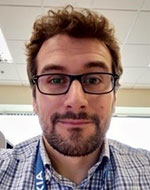 Lorenzo Galati Giordano
Lorenzo Galati Giordano
Lorenzo Galati Giordano (M’15, SM’20) is a Senior Research Engineer at Nokia Bell Labs since 2015. Lorenzo received a Ph.D. from Politecnico di Milano, Italy, and a master's degree in Innovation Management from IlSole24Ore Business School, Italy. He has more than 10 years of academical and industrial research experience on wireless communication systems and protocols, co-authored 20+ commercial patents, 30+ publications in prestigious books, IEEE journals and conferences, and 10+ standard contributions in the IEEE 802.11be.
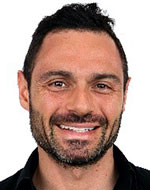 Giovanni Geraci
Giovanni Geraci
Giovanni Geraci is an Assistant Professor at University Pompeu Fabra (UPF) in Barcelona. He was previously with Nokia Bell Labs and holds a Ph.D. from UNSW Sydney. He serves as an IEEE ComSoc Distinguished Lecturer, and as an Editor for the IEEE Transactions on Wireless Communications and IEEE Communications Letters. Giovanni was the recipient of the IEEE ComSoc EMEA Outstanding Young Researcher Award.
Bin Tian
Bin Tian (btian@qti.qualcomm.com) is a Senior Director of Technology in Wireless R&D, Qualcomm Inc. He currently leads the WiFi physical layer system team which is responsible for design, analysis, prototyping and standardization of WiFi technology and solutions. Since 2012, he has contributed significantly to different generations of IEEE 802.11 standards including 11ah (Sub-1GHz), 11ax (WiFi6), 11ba (wake-up radio), 11be (future WiFi7), etc. Before 2012, he led and contributed to many R&D projects in Qualcomm on satellite and terrestrial communication systems and signal processing, etc. He holds over 290 granted or pending US patents.
Bin Tian received his Ph.D degree in Electrical Engineering for Colorado State University and holds M.Sc. and B.Sc degree in EE from Tsinghua University.
 Dennis Sundman
Dennis Sundman
Dennis Sundman is a Senior Researcher at Ericsson Research. He joined Ericsson in 2014 and has been involved in propagation measurements, channel modeling and research in the lower layers of the communication stack. He became an IEEE 802.11 standardization delegate in 2017, contributing to 802.11ba before becoming the secretary of the 802.11be task group. Dennis received his Ph.D, M.Sc. and B.Sc degree in Telecommunication from KTH Royal Institute of Technology, in Sweden.
 Boris Bellalta
Boris Bellalta
Boris Bellalta (Telecom. Eng, 2002; PhD, 2007) is an Associate Professor in the Department of Information and Communication Technologies (DTIC) at Universitat Pompeu Fabra (UPF). His research interests are in the area of low-latency networking, adaptive systems and wireless networks. In the last 15 years his research has dealt with Wi-Fi networks, as a key technology operating in license-exempt bands, and focusing on understanding Wi-Fi performance when packet aggregation, multiuser communications, spatial reuse and channel aggregation are taken into account. Currently, he is considering how new 11be features such as multi-link operation and multi-AP coordination can be used to support bandwidth hungry and delay-sensitive traffic, such as cloud gaming and virtual reality. The results from his research have been published in more than 100 international journal and conference papers, including top journals/conferences. He is currently involved in several research projects as principal investigator in the area of wireless networks, adaptive systems and machine learning.
Andrew Gowans
Andy works in the International Team in Ofcom’s spectrum policy group, and in his role, he represents the OFCOM UK in various international regulatory and standards forums including CEPT, ETSI-CENELEC, EU, IEEE, IETF and the ITU. He was previously head of the exempt technology unit in Ofcom and before this worked at the Radiocommunications Agency and Ministry Of Defence. He has expertise in various different areas of radio communication services including mobile/IMT, Broadcast, Maritime/Aeronautical, Fixed/Mobile/Satellite and various SRD technologies including WLAN, Bluetooth etc. Andy is currently chairman of ECC WGFM project team dealing with Short Range Devices and was previously chairman of Project Team FM55 (5GHz RLAN expansion bands) in CEPT. He has also represented European countries (CEPT) as a co-ordinator on PPDR issues and RLAN issues at the two previous world Radio Conferences in 2015 and 2019. He is also involved in discussions at European and world level looking at possible new allocations for new mobile data and RLANs bands in 3-7GHz as well as being involved in developing standards in ETSI for various wireless systems that employ Cognitive techniques such as listen before talk, carrier sensing, Dynamic Frequency Selection (DFS), Detect And Avoid and geo-location databases.




